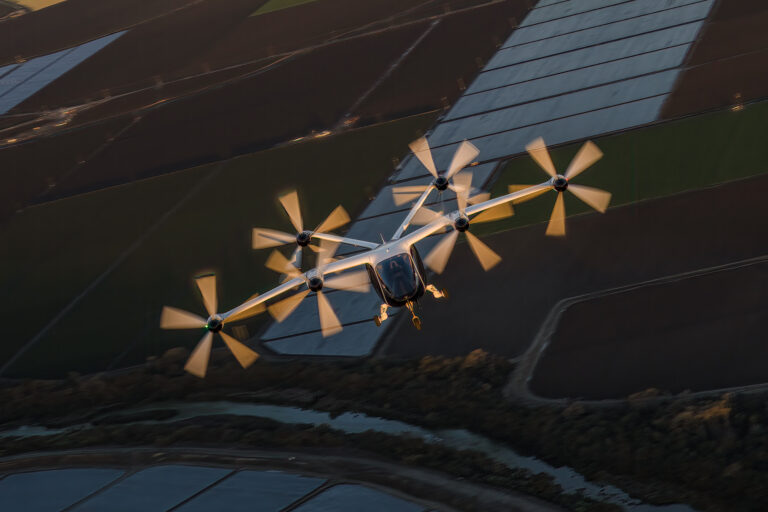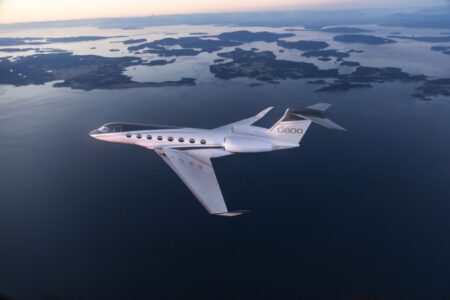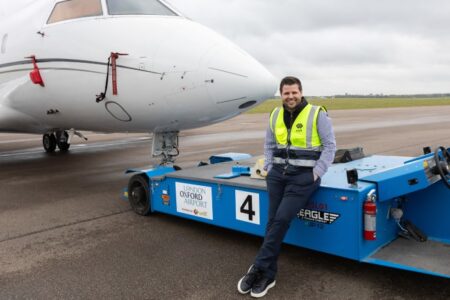For years, electrically powered aircraft have belonged in the realm of science fiction. But recent technological breakthroughs in the EV sector and billions of dollars of investment in electric batteries have helped make short-distance electric air travel economically feasible. The much-anticipated shift towards electric aircraft is expected to usher in a new era of airport development.
The race to decarbonize the aviation industry is heating up, with quite a few companies working to kick off electric aircraft production in the next few years.
For example, Joby Aviation, a venture-backed aviation company from California, is developing an electric air taxi that will carry a pilot and up to four passengers at speeds of up to 200 mph, enabling fast and quiet flight directly to popular destinations within cities and communities says, Katie Pribyl, vice president at Joby Aviation.
“We are targeting the launch of our aerial ridesharing service as soon as 2025, initially in cities like Dubai, New York, and Los Angeles, with additional markets to follow,” says Pribyl.
More than two dozen companies are on track to develop electric aircraft solutions in the coming few years, according to the Advanced Air Mobility (AAM) Reality Index, put together by SMG Consulting, a think tank. The Vertical Flight Society counts over 1,000 entrants in the AAM industry, with new ones added weekly, the analysts indicated.
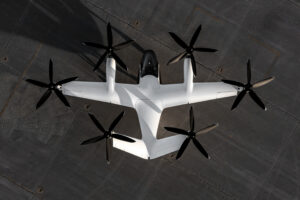
The AAM Reality index is a useful tool for FBOs to navigate in this new emerging market, Scott Cutshall, president, real estate and sustainability at Clay Lacy Aviation. For example, it helps identify the markets where FBOs may expect the soonest launch of electric aircraft.
“Once certified, each manufacturer has identified launch markets where they plan to begin operations. So, not every FBO needs to prepare in the same way. FBOs in publicly announced launch markets should be the first to prepare,” Cutshall says.
Electric aircraft promise to revolutionize the aviation industry, but one key question for FBOs is when to expect the transition to gain steam. The industry has yet to reach a consensus on this matter.
“The most ambitious timelines indicate the opportunity for FAA certification for some aircraft during the second half of 2025, potentially into early 2026,” says Eric Newman, vice president for commercial strategy & sustainability at Atlantic Aviation.
However, Newman emphasizes that these would be only the first steps and would not necessarily trigger major changes in the industry overnight. “From there, we’ll need to wait for production to scale, aircraft to be distributed and tested, public interaction – in different forms depending on the use case – to occur, and so on, before any real scale is achieved. Scaled operations and widespread adoption are likely to become more viable as we approach the end of the decade,” Newman says.
But not everybody is confident the electrical revolution in the aviation industry is just around the corner.
“I think the timeline for wide adoption of electric aircraft is at least 10 years,” Michal J. Wichrowski, CEO of PMA Aviation, business representation for airlines says.
“The certification for new generation aircraft like A350 or B787 takes years, and in the case of electric planes, we are talking about basically completely new technology, which must be carefully tested in order to secure safety for the passengers and to build their trust of flying with electric planes,” Wichrowski explains.
“I think the first aircraft could be certified in a couple of years, but the key question to me is what type of aircraft that will be,” says Fabio Gamba, director general, ASA. “The moment you have commercial aircraft capable of making long-distance flights, it will have a drastic impact on the value chain. However, I believe, in this case, we are still further away than just a couple of years.”
Market players generally expect relatively small aircraft to be the first to hit the market.
“There are viable needs for aircraft with efficient operating economics today in cargo, regional travel, and medical transport use case categories that exist across the country and the world – some OEMs and operators are initially focused in these areas,” Newman says.
Some companies are working to prove the viability of an air-taxi-type use case, moving people across cities and to existing commercial airports, Newmann states.
“Others, still, are simply moving to begin tourism-type operations – point A to point A, for example; just to get users interacting more with electric aircraft. As each aircraft receives certification and moves into the market, these different use cases will begin to be tested and validated by the market, likely somewhat in parallel,” Newman adds.
Bracing for the impact

It is clear that FBOs have a lot of work to do to prepare for the mass licensing of electric aircraft, which will happen sooner or later. As market players indicate, the scope of the work is huge.
“FBOs and other aviation infrastructure operators will need to upgrade their utility service and install high-powered charging systems to appropriately facilitate fast-charging of large aircraft batteries,” explains Newman.
Beyond that, Newman also explains that for many of these quick-turn-type operations, infrastructure will need to consider battery cooling systems in order to facilitate the highest possible efficiency in battery charging.
“Based on our experience to-date, installing chargers themselves is relatively simple, the main infrastructure challenge lies in upgrading the utility service. We’re also closely monitoring regulatory developments and working with regulators, OEMs, and operators to ensure site safety,” Newman reveals.
Cutshall emphasizes that each FBO should follow a clear action sequence to prepare for the electric transition in the aviation industry.
“The first step is to make contact with one of the manufacturers who are likely in the first group of aircraft to be certified,” Cutshall says. “The second step is to confirm if the FBO location is on their roadmap for adoption and use. Third, if the FBO is on the roadmap, then understand from the OEM what power requirements are needed.”
Fourth, Cutshall continues, is to speak with local electric utilities to understand if the power that is needed is available from the grid. If not, what is the timeline for when it will be available? If the power is not available,
Cutshall indicates, some solutions are beginning to emerge in the industry that makes use of battery storage to assist with high-capacity charging. “Finally, look to sign an agreement with an OEM so you know they want to use your infrastructure if built out,” Cutshall says.
Pribyl says airports should begin documenting the location, condition, and capacity of their existing electrical distribution resources, such as service connections with utilities, transformers, switchgear and distribution lines.
“With this information, airports can begin the holistic planning process necessary to meet future electric power demands from users across the airport. The strategic placement of projects with high power demands near these resources, or where they can be easily improved, can make a significant difference in overall viability,” Pribyl says.
In addition, electric aircraft manufacturers could help airports facilitate the transition.
“To make our service as accessible as possible, Joby has developed a safe and ultra-fast charging system that can support the needs of all electric aircraft currently under development, allowing infrastructure developers and network operators to only install one type of charger to support the entire industry,” Pribyl says.
“Our number one goal is to make sustainable air travel widely available. By making freely available the universal charging interface we’ve developed, we hope to make the transition to clean flight as quickly as possible,” Pribyl adds.
Despite the need to upgrade infrastructure, the electric transition in the aviation industry is not expected to be
too complicated.
Cutshall points out that he doesn’t anticipate any other equipment requirements beyond the chargers at this time.
However, servicing electric aircraft will require establishing new operating protocols, though it is too early to say what they will look like.
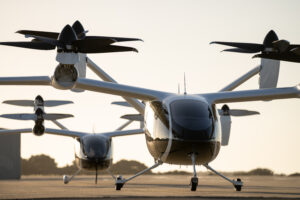
“There will be updates to Standard Operating Procedures (SOP) for electric and hybrid electric aircraft for our FBO personnel. We are working with our partners to identify what those new SOPs should include so that we can develop the appropriate training,” Cutshall says.
There will be additional staff training in some form required for servicing electric aircraft, Newmann says adding, that details will need to be defined as the industry moves closer to operation and the cadence begins to scale.
FBOs are already calculating the costs likely to be associated with the industry’s upcoming electric transition.
Newman expresses confidence that the investment model in this new emerging sector will not differ much from that already adopted in the industry.
“We need to consider up-front capital and recurring operational costs as we project our operating models forward,” Newman says.
“That said, coverage of these costs is based on the typical aviation models – we just need to figure out what operational throughput will look like and price accordingly to cover costs and maintain an appropriate return.
We’re looking at a higher cadence at scale than our traditional business, and we’re planning to adjust our model accordingly,” Newman adds.
Costs will vary significantly by location depending on a variety of factors.
For example, the cost will depend on whether there is enough power available from the grid or whether further utility infrastructure needs to be built out. In addition, an important question is where the charging equipment will be located and how close it is to the main facility switchgear.
“Regarding covering these expenses, we are anticipating charging for the cost of electricity delivered, the rate or speed in which it is delivered, an infrastructure recovery fee and landing-parking-ground handling fees,” Cutshall says.
Airports will also have to bear certain indirect costs associated with the transition, as it will
require undertaking major modernization projects.
“Currently there are not many airports under construction or under planning,” Wichrowski says.
“This might be the best time, or even the only time, when sufficient infrastructure for electric planes could be planned and built. I am not sure if such a dramatic change is possible to be accommodated at airports with high traffic already and limited space for development, as we talk about new protocols, standards, training for the staff and eventually infrastructure to be used parallel with typical fueling,” says Wichrowski.
This factor can make some FBOs reluctant to jump into modernization projects until some clear payoff prospects are seen on the horizon.
“Airports will only invest in it once they see the return of investment in the medium-term future,” Wichrowski adds.
Decarbonization is the key
In the long run, electric transition offers FBOs a chance to attract new customers.
“This might be the chance for small, regional airports or those located in the heart of the cities, as the electric planes may emit less noise and pollution than fuel engine ones. Thanks to this fact, they could be open 24/7 and target high-yielded business passengers, willing to save their time, traveling from the city centers to the city centers, who may currently use trains if there is a possibility,” Wichrowski says.
However, as Gamba points out, one of the key challenges is ensuring that the economy has enough electricity to facilitate the transition.
“When you look at the car industry and try to imagine how much energy they will require, you realize the numbers are not sustainable with the current energy production figures. So, I think the same question applies to airlines if we look at 2035, which is a horizon for only EVs to be permitted in Europe. Will there be enough electricity left for electric aircraft? No one has a definitive answer,” explains Gamba.
Gamba notes that some European countries revive their nuclear plant projects because they realize this is the only way to produce enough energy to meet the growing needs.
This is closely related to the incentives FBOs can make use of on the path towards electric transition.
According to Gamba, European ground handlers are eligible for EU funds to purchase electric ground service equipment. However, he admits that these funds are very few and quite difficult to obtain.
“You have to go through a complicated procedure to be granted these EU funds. On the other hand, you have more and more airports that are submitting calls for tenders with one of the preconditions for RFP is to show the percentage of your fleet that is electric,” Gamba says.
However, the transition is associated with several issues. “If you convert 50% of GSE to electric, there is not enough electricity in many European airports. That is the first barrier,” Gamba says, adding that this limitation can also constrain the use of electric aircraft.
“The second challenge is related to the fact that you must invest massively in new equipment.
“The cost is higher than that of the traditional design. And this cost needs to be trickled down to the customer,” Gamba explains.
The fundamental question for the coming years is what percentage of customers will be willing to pay 20% to 25% more for sustainable solutions. It will largely determine the pace of growth of the electric GSE aircraft industry in the coming decade.
“But we are getting there. At some point, we are going to have a full GSE park being electric. The question is how we can make the transition seamless,” Gamba says.


